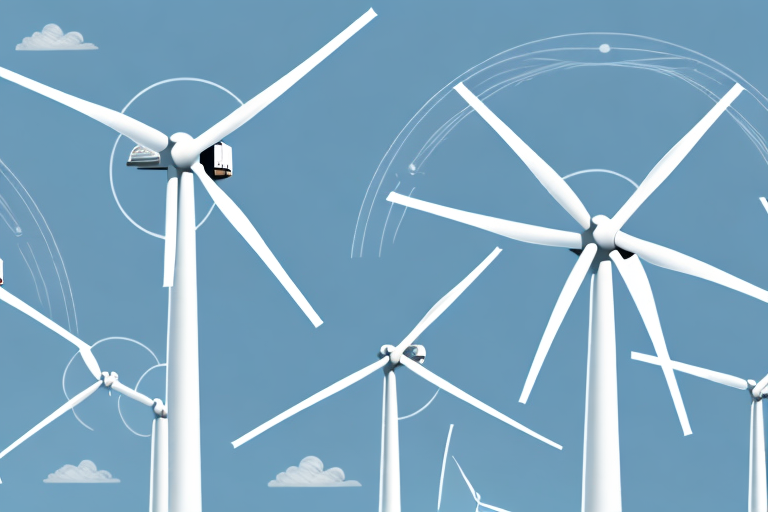Conduit fittings play a crucial role in the successful installation and operation of renewable energy systems. From solar power to wind energy and hydropower installations, conduit fittings ensure the safe and efficient transmission of electrical power within these renewable energy systems. In this article, we will explore the various aspects of conduit fittings in renewable energy installations, including their definition, types, materials used, and their significance in different renewable energy sources. Additionally, we will delve into the importance of quality and durability in conduit fittings, the impact of weather conditions on their performance, and future trends shaping the design and manufacturing of these essential components.
Understanding Conduit Fittings
Before diving into the specifics of conduit fittings in renewable energy installations, it is essential to have a clear understanding of what they are and their purpose. Conduit fittings, also known as electrical conduit fittings, are essential components used in electrical systems to connect and protect electrical wires and cables. They provide a secure and organized pathway for electrical wiring by enclosing and supporting the wires, ensuring their protection from damage and environmental factors.
Conduit fittings serve two primary functions in electrical systems:
- Protection: Conduit fittings protect electrical wiring from physical damage, moisture, dust, and other environmental factors. By enclosing the wires in a protective conduit, potential hazards such as accidental contact, impact, or exposure to corrosive substances are minimized.
- Routing: Conduit fittings provide a clear and structured pathway for electrical wires, facilitating their organized routing from one location to another. This ensures efficient installation and maintenance of electrical systems, as well as easy access for troubleshooting or repairs.
There are several types of conduit fittings available, each with its unique features and use cases. Some common types of conduit fittings include:
- Conduit Connectors: These fittings are used to connect two different conduits or to connect conduits with electrical boxes or panels. They ensure a secure and seamless connection for the electrical wiring.
- Elbows: Elbows are curved fittings used to change the direction of the conduit, allowing for smooth turns and routing around obstacles. They provide flexibility in the installation process.
- Couplings: Couplings are used to join two straight sections of conduit together, ensuring a secure and continuous pathway for electrical wiring. They maintain the integrity of the conduit system.
- Bushings: Bushings are fittings used to protect electrical wires from sharp edges that could cause damage or insulation breaches. They provide additional safety and insulation.
Conduit fittings are manufactured using a variety of materials, each chosen based on its specific properties and application requirements. Common materials used in conduit fittings include:
- Steel: Steel conduit fittings are known for their strength and durability, making them suitable for both indoor and outdoor installations. They can withstand harsh weather conditions and provide excellent protection for the electrical wiring.
- Aluminum: Aluminum conduit fittings are lightweight and corrosion-resistant, making them advantageous for installations in moist or corrosive environments. They are also easy to handle and install.
- PVC: PVC conduit fittings are popular for their affordability, ease of installation, and resistance to corrosion and chemicals. They are commonly used in residential and commercial applications.

Understanding the various types and materials of conduit fittings is crucial for designing and implementing efficient and reliable electrical systems. By selecting the appropriate conduit fittings for a specific installation, electrical professionals can ensure the safety and longevity of the wiring, as well as comply with industry standards and regulations.
The Role of Conduit Fittings in Renewable Energy Installations
Renewable energy installations, such as solar power, wind energy, and hydropower systems, heavily rely on conduit fittings for seamless electrical connectivity and protection. Let’s explore their specific roles in each of these renewable energy sources. Visit https://luxuryhomeswashington.com/the-impact-of-light-switch-design-on-home-interior-aesthetics/ to read about The Impact of Light Switch Design on Home Interior Aesthetics.
Conduit Fittings in Solar Power Installations
In solar power installations, conduit fittings are crucial for the safe and efficient connection of solar panels, inverters, battery systems, and other components. They provide a secure conduit pathway for the DC (direct current) wiring, which connects the solar panels with the inverter. Additionally, conduit fittings protect the wiring from environmental factors, ensuring optimal performance and longevity of the solar power system.
Conduit fittings used in solar power installations are designed to withstand extreme weather conditions, such as high temperatures, heavy rain, and strong winds. They are made from durable materials, such as PVC (polyvinyl chloride) or metal, that can resist corrosion and UV radiation. These fittings are also engineered to be waterproof, preventing any moisture from seeping into the electrical connections and causing damage.
Furthermore, conduit fittings in solar power installations are designed with ease of installation and maintenance in mind. They often feature quick-connect mechanisms or snap-on designs, allowing electricians to easily assemble and disassemble the conduit system when necessary. This accessibility not only saves time during installation but also simplifies troubleshooting and repairs, minimizing downtime and maximizing the energy output of the solar power system.
Conduit Fittings in Wind Energy Installations
Wind energy installations harness the power of wind to generate electricity. Conduit fittings play an essential role in these installations by providing a protected pathway for the electrical cables connecting the wind turbines, control systems, and grid connection points. In addition to protection, conduit fittings also enable easy maintenance and troubleshooting, ensuring minimal downtime and maximum efficiency of the wind energy system.
Conduit fittings used in wind energy installations are designed to withstand the harsh conditions of wind farms. They are often made from robust materials, such as fiberglass or stainless steel, that can resist the corrosive effects of saltwater and strong winds. These fittings are also engineered to be vibration-resistant, preventing any loosening or disconnection of the electrical connections due to the constant movement of the wind turbine blades.
Moreover, conduit fittings in wind energy installations are designed to accommodate the large diameter cables used in these systems. They feature spacious interior dimensions, allowing for easy cable routing and reducing the risk of cable damage or overheating. Additionally, these fittings may incorporate strain relief mechanisms to prevent excessive stress on the cables, ensuring their long-term reliability and performance.
Conduit Fittings in Hydropower Installations
Hydropower installations generate electricity from the flow of water. Conduit fittings are vital in hydropower systems as they facilitate the safe routing of electrical cables from the water turbines to the control equipment and power transmission infrastructure. These fittings protect the cables from the challenging conditions present in hydropower installations, such as moisture and mechanical stress, ensuring reliable and safe electricity transmission. Click here to read about Microhydropower Systems.
Conduit fittings used in hydropower installations are specifically designed to withstand the unique challenges posed by water-based environments. They are typically made from corrosion-resistant materials, such as stainless steel or aluminum, that can withstand prolonged exposure to moisture and water pressure. These fittings are also sealed with gaskets or O-rings to ensure watertight connections, preventing any water ingress that could lead to electrical malfunctions or safety hazards.
Furthermore, conduit fittings in hydropower installations are designed to accommodate the high voltage and current levels associated with power transmission. They feature robust insulation materials and ample space for cable routing, reducing the risk of electrical arcing or overheating. Additionally, these fittings may incorporate grounding provisions to protect against electrical surges and ensure the safety of personnel working in and around the hydropower system.
Importance of Quality and Durability in Conduit Fittings
When it comes to conduit fittings in renewable energy installations, quality and durability are of utmost importance. Here, we examine the significance of these factors and their impact on the performance and longevity of conduit fittings.
Conduit fittings play a crucial role in renewable energy installations, acting as the connection points between different sections of electrical conduit. These fittings not only provide a secure and reliable pathway for electrical wires but also ensure the overall safety and efficiency of the system. Therefore, it is essential to prioritize quality and durability when selecting conduit fittings for any renewable energy project.
Impact of Weather Conditions on Conduit Fittings
Renewable energy installations are often exposed to a wide range of weather conditions, including extreme temperatures, high winds, and heavy rain or snow. These environmental factors can pose significant challenges to the performance and longevity of conduit fittings.
Conduit fittings must be able to withstand these conditions without compromising their structural integrity and electrical performance. High-quality conduit fittings made from durable materials offer enhanced resistance to weather-related damage, ensuring reliable operation even in the harshest environments. By choosing fittings that can withstand extreme temperatures, resist corrosion, and remain unaffected by moisture, renewable energy systems can continue to function optimally, reducing the need for frequent replacements or repairs.
Maintenance and Lifespan of Conduit Fittings
Regular maintenance is essential for the long-term reliability and performance of conduit fittings in renewable energy installations. Adequate inspection, cleaning, and preventive maintenance measures can help identify potential issues early on and prevent costly failures.
However, the quality and durability of conduit fittings also play a significant role in their maintenance requirements. High-quality fittings are designed to withstand the rigors of daily operation and require minimal maintenance. By using fittings that are resistant to wear and tear, corrosion, and degradation, renewable energy systems can minimize the time and effort spent on maintenance, allowing for more efficient and reliable operation.
Furthermore, the lifespan of conduit fittings is directly influenced by their quality and durability. By investing in high-quality fittings from reputable manufacturers, renewable energy installations can benefit from extended lifespans, reducing both maintenance efforts and long-term costs associated with replacements or repairs. This not only ensures the uninterrupted operation of the system but also maximizes the return on investment for renewable energy projects.
Future Trends in Conduit Fittings for Renewable Energy
The rapidly evolving field of renewable energy brings forth exciting advancements in conduit fitting design and manufacturing. Here are some future trends shaping the future of conduit fittings in renewable energy installations:
Innovations in Conduit Fitting Design
Researchers and engineers are continually exploring new designs and materials to enhance the performance and functionality of conduit fittings in renewable energy applications. Innovative features, such as improved sealing mechanisms, increased flexibility, and ease of installation, are being developed to address the evolving needs of renewable energy systems.
Sustainability in Conduit Fitting Manufacturing
The drive towards sustainable practices extends to the manufacturing of conduit fittings. Manufacturers are increasingly adopting eco-friendly materials and production processes to minimize environmental impact. Sustainable conduit fittings not only contribute to energy efficiency in renewable energy systems but also align with the broader goals of environmental conservation.
Regulatory Changes Impacting Conduit Fittings
The regulatory landscape surrounding renewable energy installations is evolving rapidly, with changing codes and standards. Conduit fitting manufacturers must stay updated with these regulatory changes to ensure compliance and provide users with conduit fittings that meet the latest requirements. Adapting to new regulations ensures the safety and reliability of renewable energy systems and promotes the growth of the industry.
In conclusion, conduit fittings are indispensable components in renewable energy installations, providing protection and structured routing for electrical wiring. Understanding the various types and materials used in conduit fittings is key to selecting the most suitable fittings for specific applications. Quality and durability are essential considerations, given the demanding environmental conditions faced by renewable energy systems. As the renewable energy industry continues to innovate and evolve, conduit fittings will play a vital role in ensuring efficient and reliable power transmission. The future holds exciting opportunities for advancements in conduit fitting design, sustainability, and compliance with evolving regulations, further strengthening the integration of renewable energy into our daily lives.

